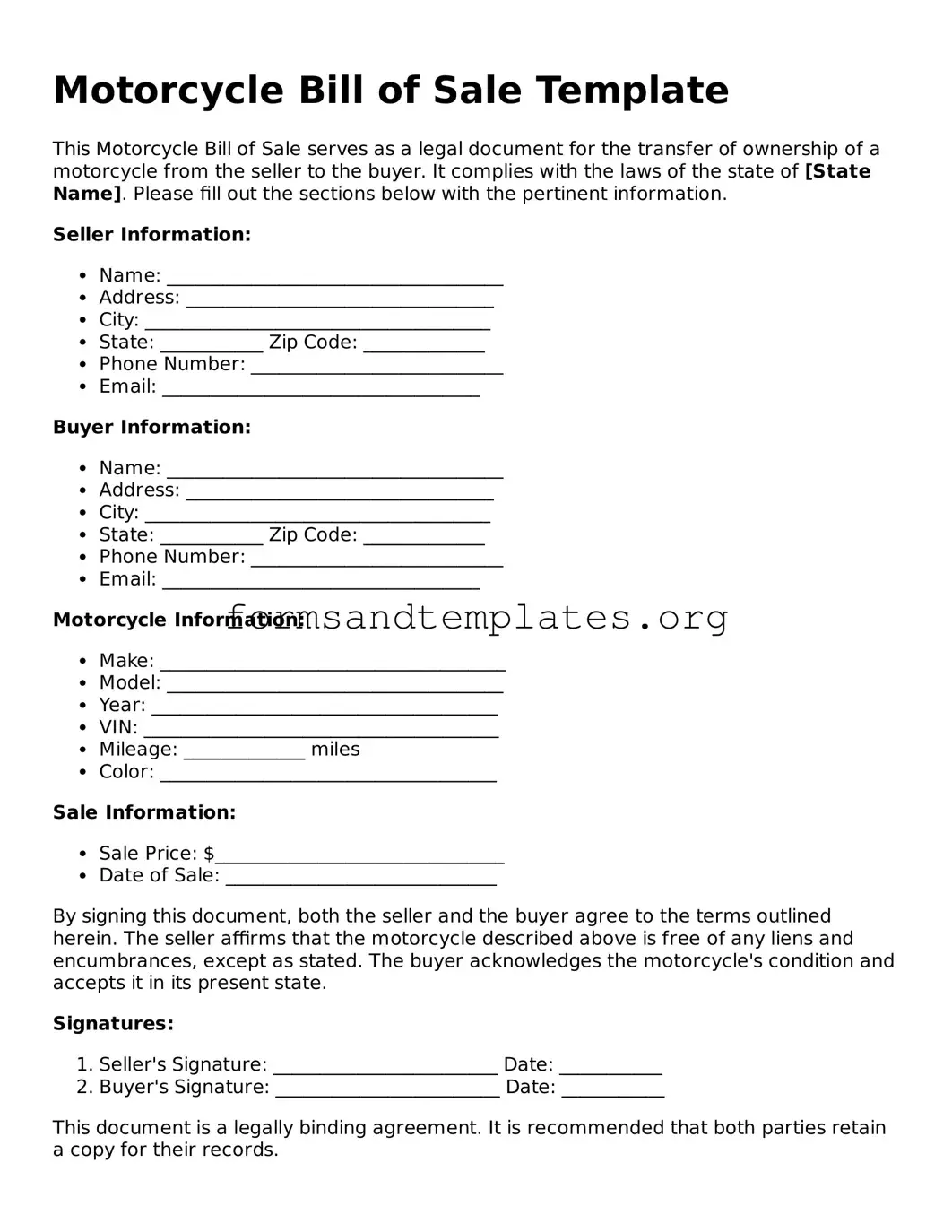What is a Motorcycle Bill of Sale?
A Motorcycle Bill of Sale is a legal document that serves as proof of the sale and transfer of ownership of a motorcycle from one party to another. This document outlines the details of the transaction, including the buyer's and seller's information, the motorcycle's description, and the sale price.
Why is a Motorcycle Bill of Sale important?
This document is crucial for several reasons:
-
It provides legal proof of ownership.
-
It helps prevent disputes regarding the sale.
-
It may be required for registration and titling purposes with the Department of Motor Vehicles (DMV).
A standard Motorcycle Bill of Sale generally includes the following information:
-
Names and addresses of the buyer and seller.
-
Description of the motorcycle (make, model, year, VIN).
-
Sale price of the motorcycle.
-
Date of the transaction.
-
Signatures of both parties.
Do I need a Bill of Sale to sell my motorcycle?
While not always legally required, having a Bill of Sale is highly recommended. It protects both the seller and buyer by documenting the terms of the sale and proving the transfer of ownership. Some states may require it for registration purposes.
Can I create my own Motorcycle Bill of Sale?
Yes, you can create your own Motorcycle Bill of Sale. Just ensure it includes all necessary information and is signed by both parties. Templates are often available online, making it easier to draft a comprehensive document.
Is a notary required for a Motorcycle Bill of Sale?
Not all states require a notary for a Motorcycle Bill of Sale. However, having the document notarized can add an extra layer of authenticity and may be beneficial if disputes arise later.
What if the motorcycle has a loan against it?
If there is a loan on the motorcycle, the seller must pay off the loan before transferring ownership. The Bill of Sale should reflect that the seller has the right to sell the motorcycle and that any liens will be cleared upon sale.
How does a Motorcycle Bill of Sale affect taxes?
The sale of a motorcycle may be subject to sales tax, depending on your state. The Bill of Sale should indicate the sale price, which will help determine the amount of tax owed. It is advisable to check local regulations regarding tax obligations related to vehicle sales.
What should I do with the Bill of Sale after the transaction?
After the transaction, both the buyer and seller should keep a copy of the Bill of Sale for their records. The buyer may need it for registration, while the seller should keep it as proof of the sale.
Can I use a Motorcycle Bill of Sale for other types of vehicles?
A Motorcycle Bill of Sale is specifically designed for motorcycles. However, similar documents exist for other types of vehicles, such as cars, trucks, and ATVs. It is best to use the appropriate form tailored to the specific vehicle type to ensure all necessary details are included.
